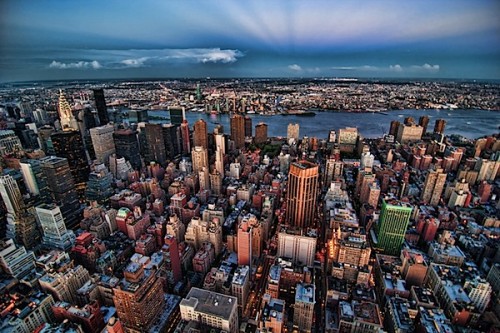Tips for Microstock Photography
I’ve always been fascinated by the endless different places we can see around the world. Undoubtedly this is one of the main factors that ignited my passion for photography.
Since I was a child my parents took me with them when traveling, and this thirst for visiting new countries grew inside me like a inherited gift.

This way I discovered the wonderful world of photography! I began to attend photography workshops, read magazines and books, and eventually decided to buy my first DSLR (Nikon D80).
When I returned from my fabulous trip to Australia last summer I was eager to rescan the images of all my last travels. At the same time I read a review about Microstock. These two events came at the right moment and intertwined perfectly.
I didn’t even know that I could sell my pictures over the internet and this news open a new road in front of me.
I immediately tried to figure out how to begin selling photos.

It was simple to begin but hard to go on because after a while you review the images you lose the capacity to correctly judge and select them.
The only way to do that is to leave some time every day to dedicate to this purpose. But this time must not exceed 10-20 minutes, otherwise it may become sort of boring.
From last September when I started many thing have changed.
At first my procedure was to select many pictures from a shoot and submit them to the microstock world. I even didn’t pay particular attention to keywords. I just thought about 5-10 keywords and write them in a hurry. Last but not least I went too far with Photoshop filters, eventually ruining potentially good shots.
After a few months of hard work I have constantly improved my skills and now I’d like to share with you what I learned and how my workflow is now organized:
For every place I visited or every shoot I made I’ve created a different folder.
Depending on my inspiration I inspect one of this folder per day, selecting new pictures that could be sold.
I created a directory called bucket with many subfolders where I put these selected files. So for example I could have a subfolder “Australia”, another one “Europe” and another “Harvest 2009”. I have many of them and they always contain files.
Every time I have to submit pictures I select only one file from each of these folders, trying to make a group not exceeding 10-20.
This way my submissions will contain images that are visible (as most recent) in a wider range of categories.
Remember that some of the main sites give priority to the last pictures submitted, so it’s a good idea to continuously send them new images in small heterogeneous groups.
This was the general idea which is behind my work, but keep in mind that there are 4 other main aspects that I will show you now.

2. Pictures Cleaning and Improvements: first of all your photos must not contain any people or trademark object. So with Photoshop or another software like Gimp you have to remove these potential problems. After that it is better to improve your pictures as much as possible, so they can stand out from the mass of millions. Obviuously It’s up to your creativity and imagination but there are a couple of Photoshop filters that may be useful. I’m not a true expert but I often improve or even save some of my files with Noise Ninja from PictureCode (smoothly removes noise) and Topaz Adjust from TopazLabs. The latter must be used with attention because it could generate too much altered pictures. The trick in this case is to apply the filter and then fade it afterwards with the Ctrl-Shift-F keyboard shortcut. Try it and you can really improve your shots.
3. Uploading: the last step is to submit your pictures. Basically you can do it either from your web browser or through ftp (istockphoto doesn’t allow ftp for all and is the only exception among the main sites). The second option is by far the best and allows you to transfer a great quantity of files without having to follow the transfer. You just put the files on a queue and make the computer do the hard work. At the end you’ll find your files on the destination site, ready for the final refinements. There are a plethora of ftp client softwares, some of them even free. Filezilla is of of the best option for the free branch, it is well known and continuously updated. In the shareware branch I spotted a great software called SmartFtp. You can try it for 30 days and then you pay about 50 bucks to keep using it.
4. Finish Submitting: after you upload your file to the variuos microstock sites you have to make the final refinements directly on site. Typically you have to choose the right categories for each image, as well as assign permissions for sale and upload a model/property release. Each site has a separate approach to this last step and if you decided to submit your files to several agencies you could find trouble remembering the whole path. Months ago I decided not to go exclusive and to send pictures to almost all agencies, just to see by myself what could happen. Time after time I build a table where for each site there is a quick reference of the last steps to complete. I hope it can help you: ?



.gif)





